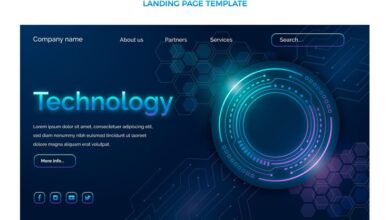Mastering SSIS 816 for Your Business

Introduction to SSIS 816
In the world of data integration and management, SSIS 816 is a game-changer. This blog post will explore the features, importance, and real-world applications of SSIS 816, offering valuable insights and practical tips to help businesses optimize their operations. Whether you are new to SSIS 816 or looking to deepen your understanding, this comprehensive guide will provide everything you need to harness its full potential.
The Importance of SSIS 816 for Your Business
SSIS 816, or SQL Server Integration Services, is critical for businesses aiming to streamline data integration processes. It helps manage data from various sources, ensuring smooth data flow and consistency. For companies dealing with large volumes of data, SSIS 816 offers a reliable solution to consolidate data efficiently, reducing redundancy and errors.
In today’s fast-paced business environment, having accurate and timely data is crucial for decision-making. SSIS 816 allows businesses to automate data integration tasks, saving time and resources. This automation leads to increased productivity, as employees can focus on more strategic tasks rather than manual data handling.
Furthermore, SSIS 816 enhances data quality by providing tools for data cleansing, transformation, and validation. These features ensure that the data used for analysis and reporting is accurate and reliable, leading to better business outcomes.
Exploring the Technical Side of SSIS 816
SSIS 816 offers a robust set of features designed to handle complex data integration tasks. One of its key features is the ability to connect to various data sources, including databases, flat files, and cloud services. This flexibility allows businesses to integrate data from multiple platforms seamlessly.
Another significant feature is the SSIS 816 data flow engine, which enables the transformation of data as it moves from source to destination. This engine supports a wide range of data transformations, such as data cleansing, aggregation, and merging, ensuring that the data is in the desired format before it’s loaded into the target system.
SSIS 816 also includes advanced error handling and logging capabilities. These features allow businesses to track and manage errors during the data integration process, ensuring that any issues are promptly addressed. By providing detailed logs and error reports, SSIS 816 helps maintain the integrity and reliability of the data.
Real-World Applications
SSIS 816 is used across various industries to solve complex data integration challenges. In the healthcare sector, for instance, SSIS 816 is employed to integrate patient data from multiple sources, ensuring that healthcare providers have a comprehensive view of patient history and treatment plans.
In the retail industry, SSIS 816 is used to consolidate sales data from different channels, providing retailers with insights into customer behavior and preferences. This data is crucial for designing targeted marketing campaigns and improving customer experience.
The financial sector also benefits from SSIS 816, as it helps integrate financial data from various sources, such as banking systems, trading platforms, and accounting software. This integration ensures that financial institutions have accurate and up-to-date information for decision-making and regulatory compliance.

Best Practices for Implementing and Optimizing SSIS 816
To get the most out of SSIS 816, it’s essential to follow best practices for implementation and optimization. First, it’s crucial to plan the data integration process thoroughly. This planning involves identifying data sources, defining data transformation rules, and determining the target system’s requirements.
Another best practice is to use SSIS 816’s built-in data profiling tools. These tools help assess the quality of the data before the integration process begins, identifying any issues that need to be addressed. By ensuring that the data is clean and accurate, businesses can avoid potential problems during the data integration process.
It’s also important to monitor and maintain SSIS 816 packages regularly. Regular monitoring helps identify any performance issues or errors that may arise, allowing businesses to address them promptly. Additionally, maintaining SSIS 816 packages ensures that they continue to meet the evolving needs of the business.
Future Prospects
The future of SSIS 816 looks promising, with ongoing advancements in AI and machine learning shaping its evolution. These technologies are expected to enhance SSIS 816’s capabilities, offering more intelligent data integration solutions. For instance, AI-powered data profiling tools could automatically detect and correct data quality issues, further streamlining the data integration process.
Another area of development is the integration of SSIS 816 with cloud-based platforms. As more businesses move their operations to the cloud, SSIS 816 is likely to offer enhanced support for cloud data sources, providing seamless data integration across on-premises and cloud environments.
Additionally, the growing emphasis on data privacy and security will influence the future of SSIS 816. Enhanced security features, such as encryption and data masking, will become increasingly important to protect sensitive data during the integration process.
Conclusion
In conclusion, SSIS 816 is a powerful tool that offers numerous benefits for businesses looking to optimize their data integration processes. By understanding its features, exploring its real-world applications, and following best practices for implementation and optimization, businesses can harness the full potential of SSIS 816. As technology continues to evolve, SSIS 816 will play a crucial role in helping organizations manage their data efficiently and stay competitive in today’s data-driven world. For more information and personalized assistance, consider signing up for a free consultation with an SSIS 816 expert.



